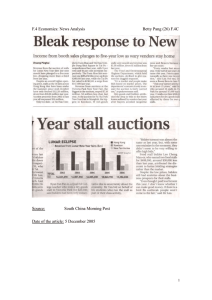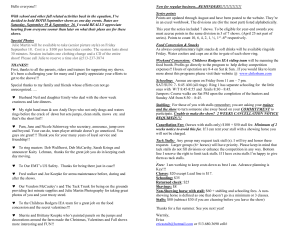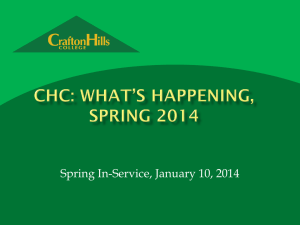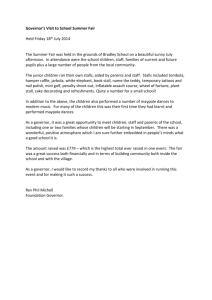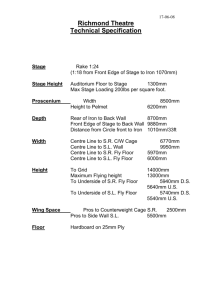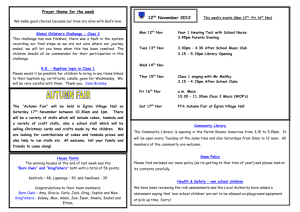|»orta Portese ||a Tortuense ^ Via Ippolito Nievo. |ap 7 Cl g 170, 280
advertisement
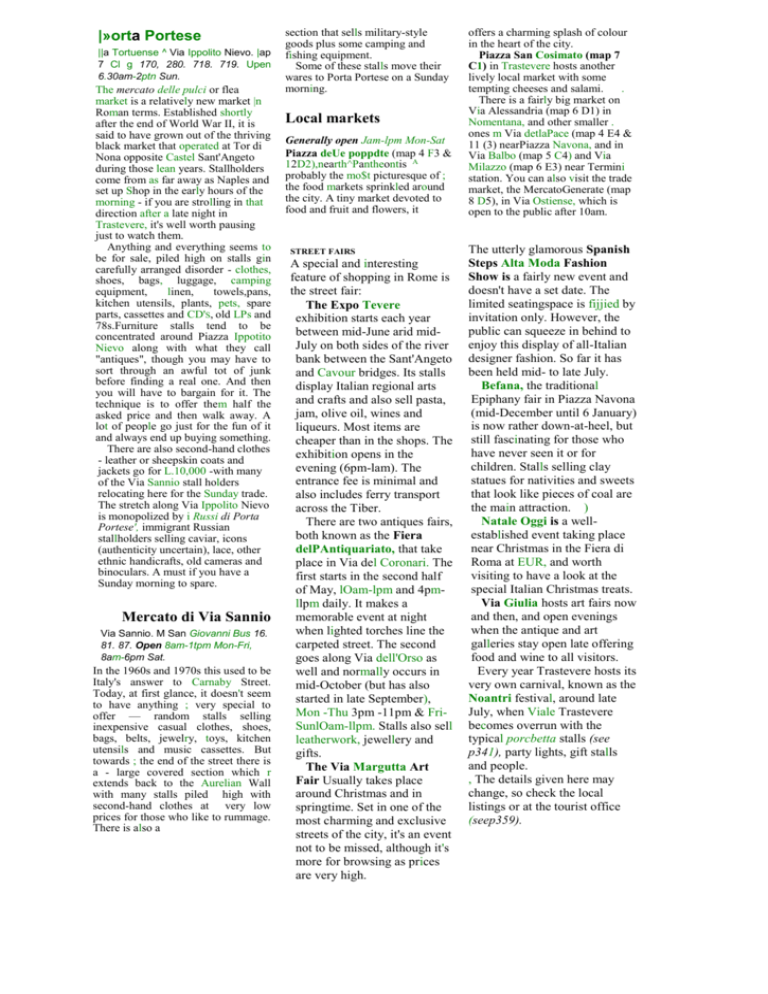
|»orta Portese ||a Tortuense ^ Via Ippolito Nievo. |ap 7 Cl g 170, 280. 718. 719. Upen 6.30am-2ptn Sun. The mercato delle pulci or flea market is a relatively new market |n Roman terms. Established shortly after the end of World War II, it is said to have grown out of the thriving black market that operated at Tor di Nona opposite Castel Sant'Angeto during those lean years. Stallholders come from as far away as Naples and set up Shop in the early hours of the morning - if you are strolling in that direction after a late night in Trastevere, it's well worth pausing just to watch them. Anything and everything seems to be for sale, piled high on stalls gin carefully arranged disorder - clothes, shoes, bags, luggage, camping equipment, linen, towels,pans, kitchen utensils, plants, pets, spare parts, cassettes and CD'S, old LPs and 78s.Furniture stalls tend to be concentrated around Piazza Ippotito Nievo along with what they call "antiques", though you may have to sort through an awful tot of junk before finding a real one. And then you will have to bargain for it. The technique is to offer them half the asked price and then walk away. A lot of people go just for the fun of it and always end up buying something. There are also second-hand clothes - leather or sheepskin coats and jackets go for L.10,000 -with many of the Via Sannio stall holders relocating here for the Sunday trade. The stretch along Via Ippolito Nievo is monopolized by i Russi di Porta Portese', immigrant Russian stallholders selling caviar, icons (authenticity uncertain), lace, other ethnic handicrafts, old cameras and binoculars. A must if you have a Sunday morning to spare. Mercato di Via Sannio Via Sannio. M San Giovanni Bus 16. 81. 87. Open 8am-1tpm Mon-Fri, 8am-6pm Sat. In the 1960s and 1970s this used to be Italy's answer to Carnaby Street. Today, at first glance, it doesn't seem to have anything ; very special to offer — random stalls selling inexpensive casual clothes, shoes, bags, belts, jewelry, toys, kitchen utensils and music cassettes. But towards ; the end of the street there is a - large covered section which r extends back to the Aurelian Wall with many stalls piled high with second-hand clothes at very low prices for those who like to rummage. There is also a section that sells military-style goods plus some camping and fishing equipment. Some of these stalls move their wares to Porta Portese on a Sunday morning. Local markets Generally open Jam-lpm Mon-Sat Piazza deUe poppdte (map 4 F3 & 12D2),nearth^Pantheontis A probably the mo$t picturesque of ; the food markets sprinkled around the city. A tiny market devoted to food and fruit and flowers, it STREET FAIRS A special and interesting feature of shopping in Rome is the street fair: The Expo Tevere exhibition starts each year between mid-June arid midJuly on both sides of the river bank between the Sant'Angeto and Cavour bridges. Its stalls display Italian regional arts and crafts and also sell pasta, jam, olive oil, wines and liqueurs. Most items are cheaper than in the shops. The exhibition opens in the evening (6pm-lam). The entrance fee is minimal and also includes ferry transport across the Tiber. There are two antiques fairs, both known as the Fiera delPAntiquariato, that take place in Via del Coronari. The first starts in the second half of May, lOam-lpm and 4pmllpm daily. It makes a memorable event at night when lighted torches line the carpeted street. The second goes along Via dell'Orso as well and normally occurs in mid-October (but has also started in late September), Mon -Thu 3pm -11pm & FriSunlOam-llpm. Stalls also sell leatherwork, jewellery and gifts. The Via Margutta Art Fair Usually takes place around Christmas and in springtime. Set in one of the most charming and exclusive streets of the city, it's an event not to be missed, although it's more for browsing as prices are very high. offers a charming splash of colour in the heart of the city. Piazza San Cosimato (map 7 C1) in Trastevere hosts another lively local market with some tempting cheeses and salami. . There is a fairly big market on Via Alessandria (map 6 D1) in Nomentana, and other smaller . ones m Via detlaPace (map 4 E4 & 11 (3) nearPiazza Navona, and in Via Balbo (map 5 C4) and Via Milazzo (map 6 E3) near Termini station. You can also visit the trade market, the MercatoGenerate (map 8 D5), in Via Ostiense, which is open to the public after 10am. The utterly glamorous Spanish Steps Alta Moda Fashion Show is a fairly new event and doesn't have a set date. The limited seatingspace is fijjied by invitation only. However, the public can squeeze in behind to enjoy this display of all-Italian designer fashion. So far it has been held mid- to late July. Befana, the traditional Epiphany fair in Piazza Navona (mid-December until 6 January) is now rather down-at-heel, but still fascinating for those who have never seen it or for children. Stalls selling clay statues for nativities and sweets that look like pieces of coal are the main attraction. ) Natale Oggi is a wellestablished event taking place near Christmas in the Fiera di Roma at EUR, and worth visiting to have a look at the special Italian Christmas treats. Via Giulia hosts art fairs now and then, and open evenings when the antique and art galleries stay open late offering food and wine to all visitors. Every year Trastevere hosts its very own carnival, known as the Noantri festival, around late July, when Viale Trastevere becomes overrun with the typical porcbetta stalls (see p341), party lights, gift stalls and people. , The details given here may change, so check the local listings or at the tourist office (seep359).
